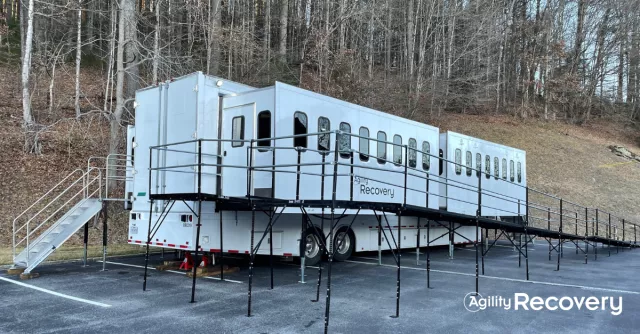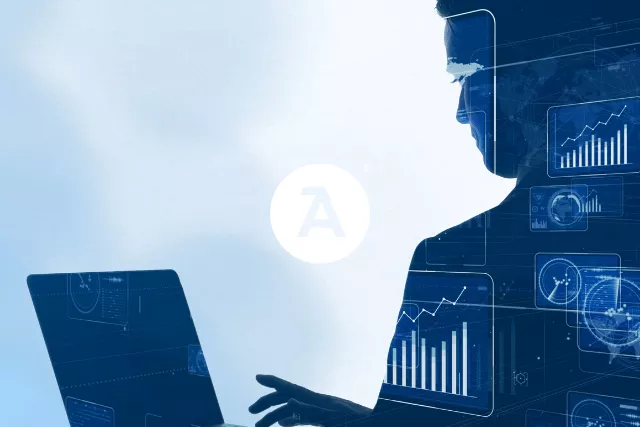Comprehensive Guide to Business Continuity Testing

This article is a comprehensive guide to business continuity testing that presents a comprehensive set of practical methods you can implement at your organization.
According to a 2019 study by BC Benchmark, 57% of companies stated that they test twice or four times a year. They do this because it helps to gain consistent buy-in throughout the company, which means that it will be more prepared in the case of an interruption.
But what is the specific importance of testing preparedness for business continuity interruptions?
Read on to learn why creating a BCP is only half the battle and why it's essential that you use frequent testing strategies to identify gaps in your business continuity and increase your preparedness.
What Is BCP Testing?
Business continuity plan (BCP) testing is a method of looking into how prepared your employees are in an emergency. It is a risk-to-reality simulation in which employees and disaster recovery teams must work together to find a solution and recover lost data, personnel issues, communications technologies, or damaged property. In essence, it's a drill for what happens if a major problem arises at an organization.
There are many reasons that testing business continuity is essential to maintaining your safety and security:
- Disaster teams can identify gaps, interdependencies, and areas for improvement in crisis management
- Continually improve plans by looking into new information
- Satisfy compliance requirements and regulators
- Reduce recovery time and cost
- Tests demonstrate a higher degree of commitment to your clients
- This commitment means that if you are the supplier to a firm, you rise among competitors (and therefore can take on more projects and win clients)
40% of people surveyed said that they had a BC test at least once in the past year, and 35% more have tested within the past six months. Conducting these tests helps ensure that your BCP will never fall behind and that you won't be at high risk of disaster erupting.
Are There Obstacles to Testing?
There's little benefit in opting out of BC testing. There's simply so much to gain by running these tests.
However, there may be some barriers to business continuity testing. The main barrier to BCP testing is that managers are afraid that they might fail the exercise and that competitors or clients may discover this failure. Such an approach is BCP testing isn't about passing or failing, but rather about identifying gaps in emergency preparedness. Moreover, BC testing takes place within an organization, so no one else will find out if you turn out to have many areas for improvement.
Some organizations opt out because they see no merit in a test. However, this is generally based on ignorance of the benefits - companies in all industries can improve their disaster response if testing is conducted. As a result, those who test business continuity can stay safer, ensure that data and productivity won't be lost, and rest assured that there will be fewer issues with property damage and serious employee injury.
Risks to Consider
You're likely wondering what specific risks you should be considering for BCP testing. A few of the most common include:
- Natural disasters (fire, floods, hurricanes, etc.)
- Property/network damage (power loss, compromised access to facilities, transportation interruption, communications disruption)
- Employee health issues (car accidents, illness, injury, heart attacks, personnel exhaustion/hypothermia)
Be sure to consider all of these risks when conducting BCP testing. This is necessary when coming up with a comprehensive plan of action.
With these risks in mind, let's take a look at the main scenarios for BCP testing.
1. Data Loss and Breach
Cyberattacks and the loss of data are the most common disaster scenarios in the workplace today. Because of this, you'll definitely want to test your response to these crises. Some common causes of lost data in the workplace are:
- Unintentionally erased files and folders
- Ransomware and cyberattacks
- A server or drive going out
- Datacenter outage
Run a BC test where your team must regain access to lost data. This will help them figure out who is responsible for doing this, how to communicate throughout the process, and what the main priorities should be here.
2. Data Recovery
This scenario is helpful for those businesses that want to make sure that a bulk amount of data can be recovered if lost.
This test evaluates whether or not your team may need objectives that are included in your RTO. It also ensures that there will be no damage to files upon recovery and that everyone understands how to access backups stored on the Cloud.
3. Power/Network Outage
If you live in an area with many storms, there will likely be power and network outages to contend within the workplace. This test focuses on what to do if a storm wipes out your power for a good chunk of time.
You will learn how to notify your workforce about the incident and delegate both in-house and remote tasks. Testing lets you see which departments are most affected by a power outage and will be in need of immediate relief.
If you have a backup power generation, you will need to make sure that a team member knows how to use it as well. You also should make sure that someone knows about a mobile recovery location (if one exists).
4. Physical Disruption
You likely already conduct this type of BCP testing in the form of fire drills. You also should do drills and learn what will happen in other natural disasters like tornadoes, hurricanes, earthquakes, and flash floods. Bomb threats and active shooter situations can also be tested here. Physical disruption tests are most important in regulating and ensuring the physical safety of employees.
5. Emergency Communication
These scenarios outline how people within the workplace are to communicate in the event of a disaster. You'll need to outline what actions to take, get an emergency notification software, and teach people how to use it. You also will need to update emergency contact information and create templates for every major disaster scenario.
The Tiers of BCP Testing
BCP testing works in five tiers. Here is a run-down of each of these tiers to understand how tests must be conducted. Below are the ways to help your organizations become more explicit about company and employee responsibilities, locate resources for data and personnel recovery, and generally be prepared if worst happened after disruption of services.
The first BC testing tier
A tabletop exercise is a group exercise that looks into the response of your crisis team to specific disaster situations that might occur. The intention is to quickly detect previously undetected gaps in your plan. A tabletop test exercise looks into the various issues that need to be addressed by your response team. A general guide for a successful tabletop exercise includes:
- Choosing a realistic threat to examine that can actually happen in your industry or organization (when you practice responding to this threat, you will know that you have a crisis team that can act in realistic scenarios)
- Have clear objectives as to what must be accomplished
- Follow the schedule that you (and the rest of the participants) have mapped out ahead of time
Act on what was learned in the exercise (discuss strengths and weaknesses in the way that the organization responded to the threat and figure out how you can build up your weakest points)
The second BC testing tier
Experienced user participants are an integral part of tier two in the recovery operation. These individuals are the people most essential to planning actions that fight against issues with BC disruption.
Facilitated discussions can happen in multiple ways. Talk about the scenario that you acted on during your tabletop exercise and identify potential issues and problems with your response. You can then take them from the scenario and give these problems/issues to the team in charge of crisis recovery. Involved parties can then brainstorm and discuss the ways that these response issues could have been better handled so that everyone has a more efficient plan of action in the event of a real emergency.
The third BC tier
Next, you'll need to have a multi-site and multi-day strategy. At this point, you should send teams of employees to work from home. Others should be sent to a mobile recovery unit.
These teams of employees will be working on different disasters. Each of the teams will have a scenario that they need to take care of, and participants within the team will need to work together under limited pressure to identify and manage the simulated situation. They will need to work together as a cohesive unit to make decisions, manage information presented to them, log what happens, and handle dilemmas within the fictional crisis.
The fourth BC testing tier
After single teams/small groups simulate handling disasters, you need to schedule a dry run event. This means shutting down the office, sending personnel to a mobile recovery unit, and completing a dry run of the activities and solutions that have been pre-planned.
This is an extension of the single-team simulation to the interaction of multiple teams. At this tier of BCP testing, the goal is for teams to communicate and coordinate with one another.
The fifth BC testing tier
Full-scale exercises involve all of the teams that would work on a real-life crisis. You need to choose a full-capacity day where there are as many employees as possible working and perform a mock test. No warning should be given to these workers before this takes place - it must be a surprise so that the testing is as realistic as possible.
This tier shouldn't be undertaken until all other tiers have been mastered. All teams must be competent and confident in their abilities and experience to have as efficient a full-scale exercise as possible.
Various Types of Testing
You must try multiple types of business continuity testing plans at your organization. This ensures that you identify gaps in your recovery plan. Read on to learn about some of the types of testing that your company must focus on to be as efficient and effective as possible.
1. Tabletop Test
A tabletop test is one of the best ways to involve all essential employees. As we discussed, these are simply group exercises that analyze the efficiency of your crisis team. You may want to run multiple tabletop exercises to look into different disaster situations.
2. Walk-though/Simulation Test
A BCP simulation test is just a more hands-on type of tabletop exercise.
As the name suggests, a tabletop test mainly consists of discussing plan details around a table. On the flip side, a simulation test combines real-life recovery actions into these discussions. It can cover emergency notification, restoring backups pot data-loss, network outage, physical recovery, and basically any other scenario in which a risk becomes a reality.
Along with critical personnel, every employee at your company would be involved in this BCP event testing process.
3. Plan Review
A plan review is basically a business continuity plan audit. The BCP team, C-level management, and department heads will get together to review the plan. At this point, they will decide together if any components to BC are missing or need revision.
Aspects reviewed during a meeting include:
- Contact information of BCP team members
- The validity of your organization's recovery contracts
- Coverage of applicable BC and disaster recovery scenarios
- Training new managers on plan details (which they can then pass on to their teams)
This type of test is generally best used to train new members of the BCP team. It also is excellent for regular onboarding of new employees.
What to Do After BCP Testing
After your BCP test is conducted, there are a few things you'll need to do with the results.
- Review test findings with all participants when the test is complete (and do it again after all notes are compiled)
- Assign responsibilities for open action items to the people who need to take care of them
- Update and distribute the written plan for business continuity
- Capture items to consider the next time you conduct a BCP test
It's critical to document the results of any testing hat your business conducts. You'll also want to record any actionable findings that stem from those tests. This will help your employees and contractors to learn what can and should be improved upon in the future. It will also allow everyone to visualize and understand how much progress has been made.
Following up on your findings, writing down recommendations from tests that you've taken, and consolidating notes are the most crucial processes in BCP testing. Testing, registering the results of your testing, and executing methods to improve your BCP is one of the best ways to make your organization's response processes stronger.
Get Started
Now that you know all about business continuity testing, it's time to get started.
Request a demo of our top-of-the-line BCP software so that you can plan, train, test, alert, and manage recovery on one single, easy-to-use platform. Our experts are available to discuss the ways that you can maximize your efficiency when you begin testing your BC strategy.



